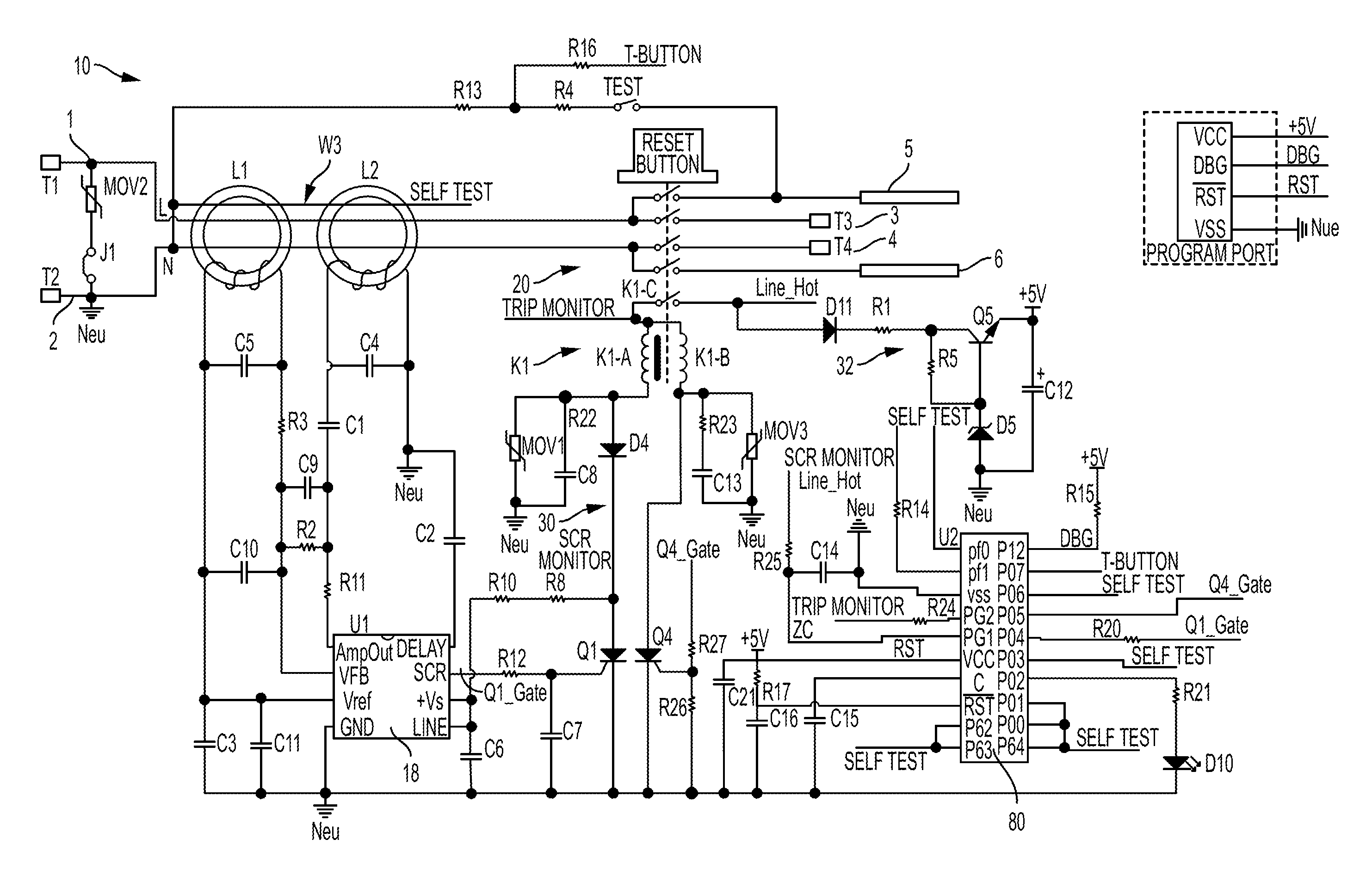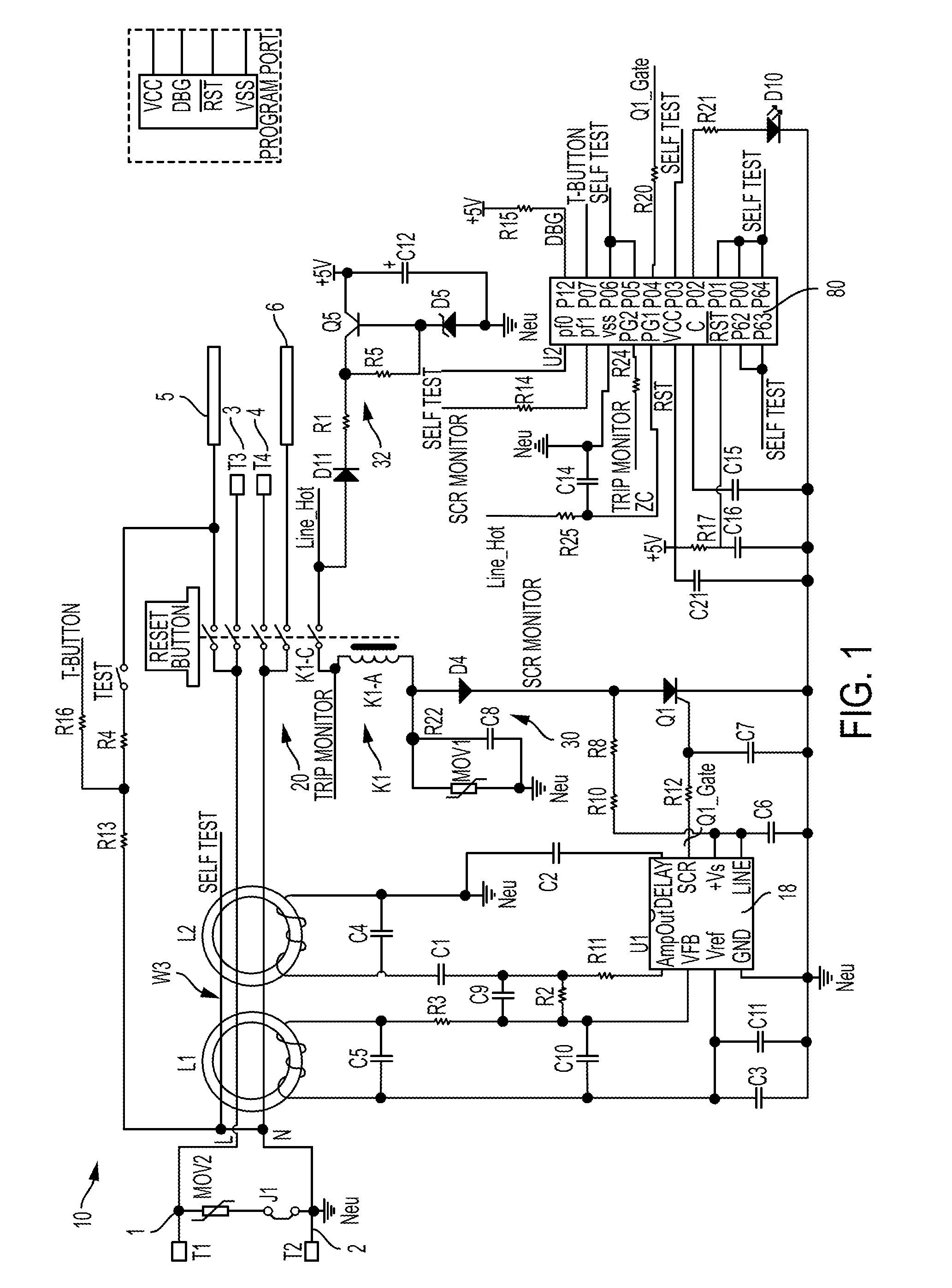Protective Device with Self-Test
a protection device and self-testing technology, applied in the direction of electrical apparatus, arrangements responsive to excess voltage, arrangements resposes to fault current, etc., can solve the problems of electrical arcing, failure of all products relying on electronic components and mechanical parts, and combustible ignitan
- Summary
- Abstract
- Description
- Claims
- Application Information
AI Technical Summary
Benefits of technology
Problems solved by technology
Method used
Image
Examples
Embodiment Construction
[0073]Reference will now be made in detail to the present exemplary embodiments of the invention, examples of which are illustrated in the accompanying drawings. Wherever possible, the same reference numbers will be used throughout the drawings to refer to the same or like parts. An exemplary embodiment of the protective device of the present invention is shown in FIG. 1, and is designated generally throughout by reference numeral 10.
[0074]As embodied herein, and depicted in FIG. 1, a schematic diagram of a protective device 10 in accordance with an embodiment of the present invention is disclosed. The device 10 includes a differential transformer L1 and a grounded neutral transmitter L2. The differential transformer L1 includes a secondary winding which is coupled to the fault detector integrated circuit 18 by way of noise filtering circuitry. The differential transformer L1 senses the current differential between the hot and neutral conductors and provides a sensor signal to the g...
PUM
 Login to View More
Login to View More Abstract
Description
Claims
Application Information
 Login to View More
Login to View More - R&D
- Intellectual Property
- Life Sciences
- Materials
- Tech Scout
- Unparalleled Data Quality
- Higher Quality Content
- 60% Fewer Hallucinations
Browse by: Latest US Patents, China's latest patents, Technical Efficacy Thesaurus, Application Domain, Technology Topic, Popular Technical Reports.
© 2025 PatSnap. All rights reserved.Legal|Privacy policy|Modern Slavery Act Transparency Statement|Sitemap|About US| Contact US: help@patsnap.com



